Patrizia Sandretto Re Rebaudengo is considered by all the cultural field, not just the Italian one, one of the most important, unique, innovative and powerful figures in the art world. I had the pleasure of being able to ask you a few questions.
Francesco Liggieri: I would like you to describe yourself through the title of a work of art.
Patrizia Sandretto Re Rebaudengo: It is always very difficult for me to choose among the works in the collection. As soon as I read this question, however, Rise came to mind, the extraordinary sculpture that Marguerite Humeau conceived for our Art Park. Installed on the top of the San Licerio hill in Guarene[1], next to the Nebbiolo vineyard: Rise, exactly as the title anticipates, is birth and growth. Made with an aluminum casting, it is composed of a multiplicity of parts that explode from the centre. Each module reproduces, on a large scale, the microscopic male and female flowers of the vine plant. The intertwining evokes their first pollination, the meeting that generated the first hermaphrodite flower, characteristic of the Sativa subspecies of Vitis Vinifera. The sculpture alludes to the idea of a “tree of life” that connects the earth and the cosmos; but it is also inspired by recent biological and genetic studies led on the determination of the sex of the vine. Rise recalls the connections of the synapses of a neuronal network, but also the effect of technology’s speed on artificial bodies and objects. As the artist explains, the work seems to capture an act of love or, the opposite, of intense violence, whirling in the wind. I feel very close to this philosophy: I am rooted in the ground, but I always project myself upwards, into the world of ideas, constantly in tension towards discovery and future, sometimes animated by thoughtful choices and other times by spontaneous inclinations.
What can a museum or a contemporary art foundation do for the growth of the country?
I think a museum or, in our case a Foundation, should aim to create contents, promote knowledge, inspire and support young creative generations. Institutions can develop tools and methodologies to make contemporary art an educational engine and an important factor in community building processes. Contemporary art can play a decisive role in the process of extending the right to cultural citizenship and therefore it is for me a tangible value, a wealth for the life of people and our society, and therefore for the growth of the country. With Sandretto Re Rebaudengo Foundation, we focus on the positive values that contemporary art also conveys, also through a special attention to the younger generations and to the value of culture as a device for networking. In this direction I think of Verso, a project that we presented in 2021 and which will end in July 2022. It is a program of exhibitions, workshops, meetings, visits and conferences dedicated to young people aged from 15 to 29 years old, curated and produced together with the Department of Youth Policies of the Piedmont Region, under the aegis of the Presidency of the Council of Ministers, the Department for Youth Policies and the Universal Civil Service. Growth also means training. Since 2007 the Foundation has promoted the Young Curators Residency Program, thanks to which every year three young and promising curators, coming from the best specialist schools in the world, make a long trip in Italy accompanied by one of our tutors. The journey allows them to get to know personally the young artists and the Italian creative scene. The residency ends with an exhibition presented in our seat. Thanks to this project, Italian contemporary art comes into contact with the eyes of foreign curators, many of whom then continue to involve the Italian artists they met during the residency. To truly support the art of our country, I believe it is essential to increase the mobility of our artists and develop opportunities of professional exchange for them, even with foreign peers.
How has the pandemic affected your work?
We all have found ourselves having to face critical issues and changes. The pandemic has had a macroscopic impact on the cultural sphere. The emergency has involved the entire art sector, its institutions, galleries and fairs. Now, the new challenges to face ask us to re-invent ourselves, in order to stay in tune with our time and its changes. For example, the migration of activities and content production in the digital sphere, on sites and on social networks, represented a first important response. I am sure that the coexistence of on-siteand on-linewill be one of the keys to understanding the activity of the future, even though, in our case, the digital sphere was already very present in our communication strategy. We have always paid particular attention to the needs of our visitors and the different ways to maintain a dialogue with our public. Even when the Foundation had to physically close its doors, in March 2020, we chose to keep open the virtual ones, through the website and our social media, enhanced in a strategic and experimental way. We had to rethink our planning, we produced and conveyed new content, continuing to focus on the areas that distinguish the institution’s identity: curatorship, education and training, cultural mediation, accessibility. We also have started producing digital works (on the occasion of Waves Between Us, the final exhibition of the 14th edition of the curatorial residence, opened at Palazzo Re Rebaudengo, in Guarene) and we have developed an online platform, which every week hosted the digital production of a different artist. Digital spaces, however, do not replace the physical one neither the live relationship with the works on display, we have not indeed embarked on the path of virtual tours, but we have reflected on digital ways to deepen the exhibition through posts, images, videos. To communicate art and to approach a wide audience, we work with the further objective of disseminating the works outside the designated spaces. The idea, accelerated by the pandemic, is to bring the works directly into contact with citizens and their communities, both in urban, and rural and natural context, to create an intersection between culture and nature. I am convinced that Italian villages such as Guarene represent the basis to redesign the routes of a more conscious, attentive and sustainable tourism. For this reason, we exhibit the works beyond the walls of Palazzo Re Rebaudengo and in other places in the village, such as churches, former prisons, newsstands. Here, in 2019, we opened the already reffered Art Park. A public art project for which we have have invited several artists to create site-specificworks.
Would you call yourself a patron?
Today, being a patron means to establish a profound dialogue with the artists, also through commissions that offer them the opportunity to produce new works. In my case, the commission often evolves into an exhibition or a project offered to the public reading. I have always thought of the Foundation as an active production center: we devise programs to support, residency projects, awards, opportunities to exhibit, in the awareness that it is not always easy for the new generation to find opportunities for growth and visibility. For over twenty-five years, investing has meant for me to direct resources, study and professionalism on the production of the works of these young artistic generations. At the same time, for the Foundation, patronage also means paying particular attention to a different audience, favoring the widest accessibility and limiting as much as possible the costs borne by the visitor. For example, cultural mediation of art is by choice totally free. I am convinced that precisely in these missions – in the centrality assigned to artists, the public, local communities – merges the philanthropic character of the Sandretto Re Rebaudengo Foundation, that, although private, plays a role similar to that of a public institution. If the urgency to share was one of the first reasons for its establishment (overcoming the more traditional conception of private collecting), the Foundation has always solicited dialogue between public and private, with the aim of activating networks capable of improving and innovating the context in which we operate. While philanthropy once involved an entrepreneur or a family, in a totally private action, today’s “patronage” is called upon to compete with an articulated network of interlocutors, who have the right and the duty to act in a clear, traceable, responsible way. Patronage makes sense if, and when, it is brought into reality. Bringing art among people in a concrete and supportive way and designing always new proposals of mediation and education is a way of living one’s civic commitment.
How important is the educational aspect for the Sandretto Re Rebaudengo Foundation?
The Foundation has always focused on the positive values that contemporary art also conveys through education. Through the Department, we relate to diversified audience: we start with kindergartens, to continue with kindergartens, gradually up to high schools. Every year we welcome to the Foundation more than 30,000 students of every age, who come into contact with the works on display and with our spaces. The presence in the exhibition of the cultural mediators makes the dialogue with the works possible and makes our center a place for discussion and socializing. One of the Foundation’s objectives is precisely to bring an ever-wider audience closer to contemporary art, our Educational Department designs and implements activities dedicated to schools, young people, adults, teachers, families, and people with frailty. With the Italian Blind Union, for example, we have been experimenting for years with the use of the senses and narration during the visits to the exhibitions for blind or visually impaired people. The Department specifically proposes: visits and workshops related to current exhibitions, in-depth workshops, meetings and interviews with the artists, focus on the professionalism of contemporary art, training for teachers and operators, paths for people with disabilities, e-learning activities in English, school-work alternation, proposals for nursery schools, playrooms and workshops for families.
What would you recommend to those who want to start collecting works of art?
The general criteria that guide my choices are various. First of all, I focus on the research undertaken by the artist and on the meaning that the single work has in this path. I think it also takes a little courage to choose what to collect: I love to measure myself with works that are not familiar to me, that put me in relation to the complexity of the present. A decisive role is indeed played by curiosity: in a work I firstly look for what I don’t know, otherwise I expect it to be able to show me a different angle to look at what I seem to know already. Art is for me a form of opening up to the world, a lens to read the dimension in which we live in. To start collecting, I recommend reading books, catalogs, magazines, visiting artists dedicated platforms and websites, studying and immersing in the art of all times. Training your gaze means also visiting exhibitions, galleries, fairs, biennials, and talking with the artists, visiting their studies, looking as much as possible without filters and without preconceptions. My advice is to let be inspired, intrigued, enthused and even disappointed. Personally, I experience my collection as a unique story that flows through episodes, encounters, a red thread that joins my biography with that of the artists, that of their studios or the one of their cities. Collecting in this sense is a bit like drawing one’s own map of the world, building new paths.
A curiosity: are you also the creator of you outfit, or do you have an image consultant?
I don’t have an image consultant. I love small Turin tailors; they have beautiful fabrics and invent magnificent designs. The clothes I wear are designed and made by Pieces Uniques, my trusted couture: they are unique and original pieces, the result of the encounter between my personal taste and the talent of an expert craftsman. Every morning, on each of those dresses, I punt one of the pins or I wear a necklace from my American Costume Jewelerycollection: a collection of about a thousand pieces including brooches, necklaces, earrings and bracelets. These jewels, coming from the United States, tell a story of the creatives who reacted to the great crisis of 1929 and to the difficult years of the Second World War, designing and creating fantasy jewels with eclectic and non-precious materials. In this way they gave impetus to an extraordinary experimentation in the field of handcrafted design. The works of art I love always have the power to tell stories, to trigger reflections and have a strong impact on me every time I look at them. The same goes for my jewels, which I usually wear and choose according to the mood, the occasion, the season and the clothing. They constitute a living collection, in continuous growth.
Francesco Liggieri
Info:
Fondazione Sandretto Re Rebaudengo – via Modane, 16, Torino
Palazzo Re Rebaudengo – piazza Roma, 1, 12050 Guarene (CN)
visits by appointment:
+39 011 3797600
[1]Borgo in which Palazzo Re Rebaudengo stands, historical seat of the Sandretto Re Rebaudengo Foundation since 1997. Palazzo Re Rebaudengo, in Guarene, is an eighteenth-century residence, protected by the Superintendence of Cultural and Environmental Heritage, it is one of the historic buildings of this small village nestled in the hills of the Roero, an area that, together with the Langhe and Monferrato, is recognized as a Unesco heritage site. In 2019, not far from the Palazzo, the Foundation opened the Collina di San Licerio Art Park to the public. The installations of artists from all over the world are placed between a wild forest and the rows of a young vineyard.
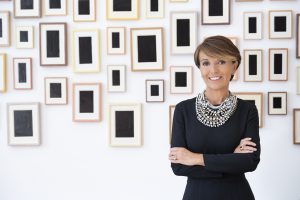 Patrizia Sandretto, potrait, photo by Riccardo Ghilardi, Contour by Getty Images
Patrizia Sandretto, potrait, photo by Riccardo Ghilardi, Contour by Getty Images
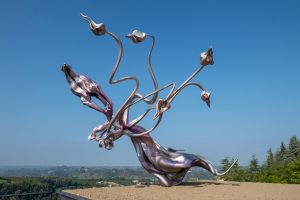 Marguerite Humeau, Rise, 2021, photo by Domenico Conte, courtesy dell’artista e di Fondazione Sandretto Re Rebaudengo
Marguerite Humeau, Rise, 2021, photo by Domenico Conte, courtesy dell’artista e di Fondazione Sandretto Re Rebaudengo
 Palazzo Re Rebaudengo, Guarene, courtesy Fondazione Sandretto Re Rebaudengo
Palazzo Re Rebaudengo, Guarene, courtesy Fondazione Sandretto Re Rebaudengo
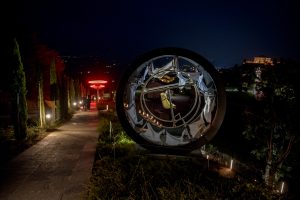 Art Park Sandretto Re Rebauengo, Guarene, courtesy Fondazione Sandretto Re Rebaudengo
Art Park Sandretto Re Rebauengo, Guarene, courtesy Fondazione Sandretto Re Rebaudengo
 Educational Department, courtesy Fondazione Sandretto Re Rebaudengo
Educational Department, courtesy Fondazione Sandretto Re Rebaudengo
 Fondazione Sandretto Re Rebaudengo, Torino, courtesy Fondazione Sandretto Re Rebaudengo
Fondazione Sandretto Re Rebaudengo, Torino, courtesy Fondazione Sandretto Re Rebaudengo
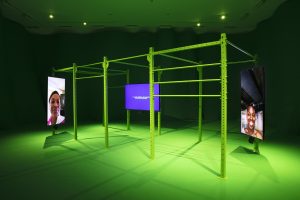 Martine Syms, Neural Swamp, 2021, installation view at Fondazione Sandretto Re Rebaudengo, courtesy Fondazione Sandretto Re Rebaudengo
Martine Syms, Neural Swamp, 2021, installation view at Fondazione Sandretto Re Rebaudengo, courtesy Fondazione Sandretto Re Rebaudengo
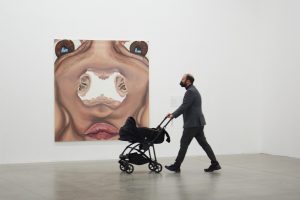 Group show, Stretching the body, , 2021, installation view at Fondazione Sandretto Re Rebaudengo, courtesy Fondazione Sandretto Re Rebaudengo
Group show, Stretching the body, , 2021, installation view at Fondazione Sandretto Re Rebaudengo, courtesy Fondazione Sandretto Re Rebaudengo
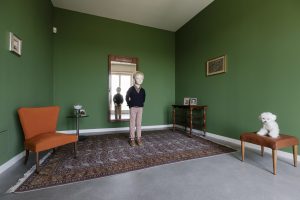 Exhibition Prima che il gallo canti, 2021, installation view at Palazzo Re Rebaudengo, courtesy Fondazione Sandretto Re Rebaudengo
Exhibition Prima che il gallo canti, 2021, installation view at Palazzo Re Rebaudengo, courtesy Fondazione Sandretto Re Rebaudengo
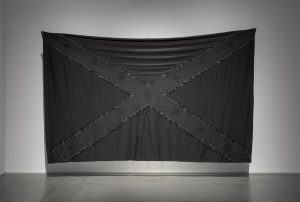 Group show Qualcosa nell’aria, 2021, Arthur Jafa’s artwork, installation view at Palazzo Re Rebaudengo, photo Sebastiano Pellion di Persano, courtesy Fondazione Sandretto Re Rebaudengo
Group show Qualcosa nell’aria, 2021, Arthur Jafa’s artwork, installation view at Palazzo Re Rebaudengo, photo Sebastiano Pellion di Persano, courtesy Fondazione Sandretto Re Rebaudengo
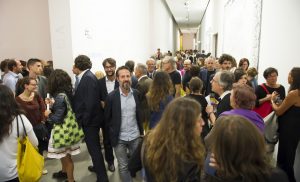
Fondazione Sandretto Re Rebaudengo, Festa 20 anni, Torino, 10/09/2015 © Giorgio Perottino,, courtesy Fondazione Sandretto Re Rebaudengo
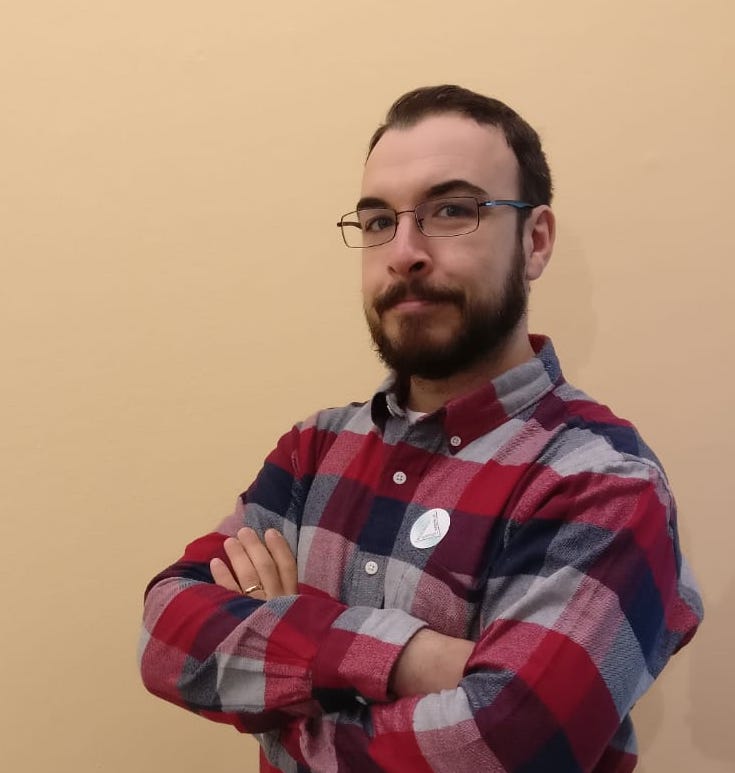
Independent artist and curator. Founder of No Title Gallery in 2011. I observe, study, ask questions, take informations and live in contemporary art, a real stimulus for my research.






NO COMMENT